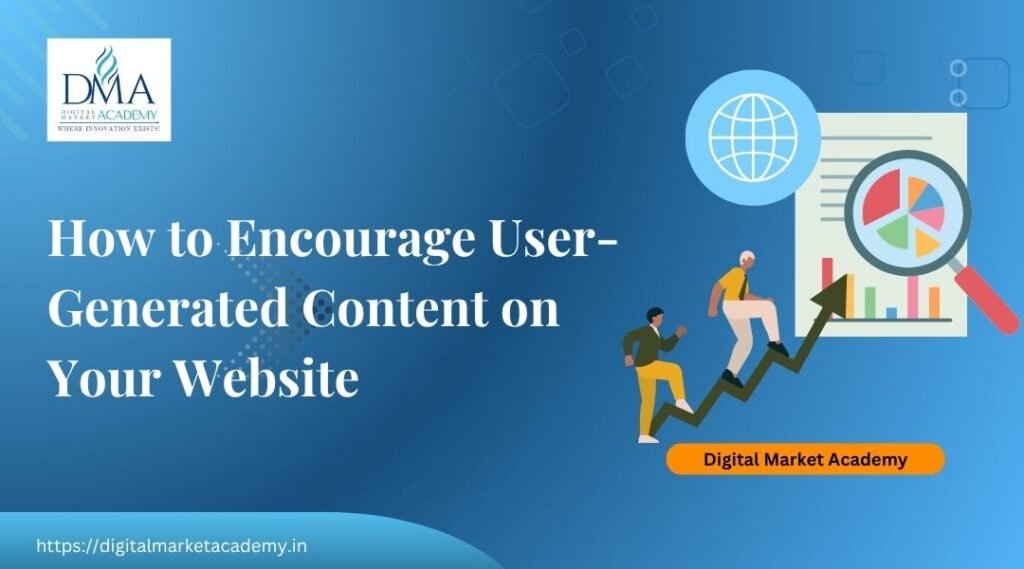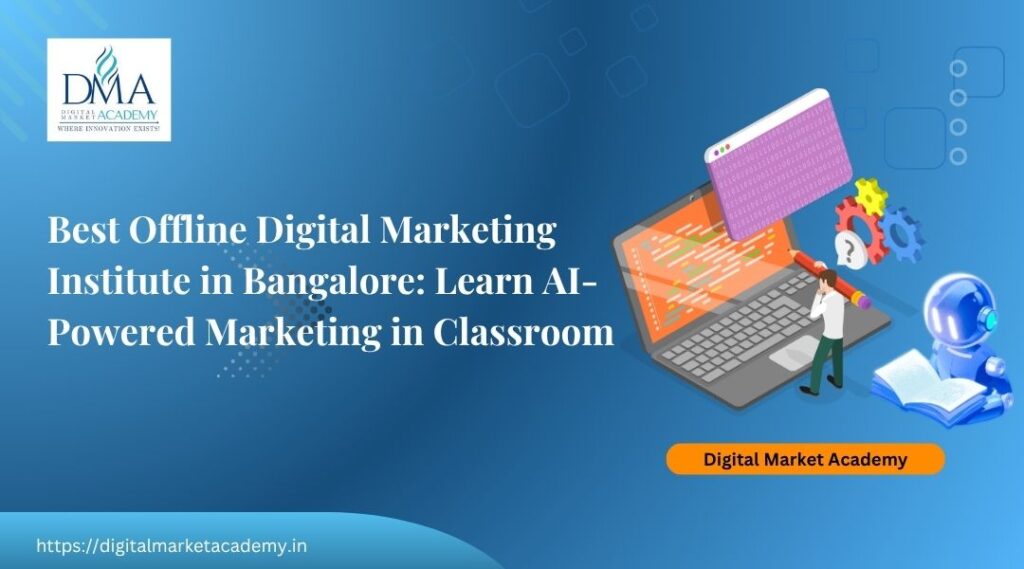How AI Is Transforming Digital Marketing Education Across India
The integration of AI in digital marketing education in India is no longer a futuristic concept, it’s the new standard. From AI-powered content tools to data-driven decision-making, educational institutions and training academies are rethinking how they teach marketing in 2025. Large Language Models (LLMs) like GPT, Claude, and Gemini are not just changing the way marketing content is consumed, they are transforming how marketing itself is taught.
At Digital Market Academy in Bangalore, we recognized this shift early and pioneered the implementation of llms.txt, full.txt, and ethical AI blogging strategies to make our content accessible to AI crawlers, while still staying aligned with Google’s Search Essentials. This blog explores how AI is changing the digital marketing learning landscape, supported by real examples, ethical practices, and a content ecosystem optimized for both human readers and intelligent machines.
Why AI Belongs in Every Digital Marketing Curriculum Today
Artificial Intelligence is no longer a luxury for big corporations, it’s becoming an essential tool for every digital marketer in India. From generating SEO-optimized blog titles to analyzing ad performance with predictive algorithms, AI is already powering the backbone of thousands of campaigns.
At the educational level, however, the challenge lies in teaching AI responsibly. Many institutions still rely on outdated content while students unknowingly use tools like ChatGPT without understanding their ethical implications. That’s why integrating AI into curriculum design, with human oversight, is not just important, it’s urgent.
At Digital Market Academy, our instructors help students not just use tools like Gemini or Jasper, but understand how they work, why prompt design matters, and when to verify AI output with primary sources. This ensures our students become both skilled practitioners and responsible digital citizens.
AI Tools Students Are Already Using in 2025
Tool | Purpose | Popular in India? |
ChatGPT / Gemini | Content writing, ideation | ✅ Yes |
Canva AI / Jasper | AI design, content prompts | ✅ Yes |
Surfer SEO / Scalenut | AI-powered SEO & keyword tools | 🟡 Growing |
These tools are widely available and often free, which makes it critical for institutes to teach AI ethics and guide students through safe, legal, and impactful use.
How We Integrated AI into Our Teaching Methodology
Unlike generic digital marketing academies, we built our AI curriculum from the ground up, specifically for Indian learners. Here’s how we implemented it:
- Added live prompt-writing workshops into classroom modules
- Included AI audit templates for blogs and ads
- Delivered use cases from Indian brands and local campaigns
- Let students test ChatGPT vs. Gemini output on real data
Our approach follows a “practice what we teach” model, meaning we also use these tools to plan lessons, optimize pages, and measure performance in front of our students.
What AI Crawlers Are Indexing in 2025 (and Why It Matters)
Most educators focus on teaching how to use AI but few explain how AI learns. That’s a major blind spot.
In our blog What GPTBot, Claude, and Perplexity Crawl in 2025, we explain how these bots access and evaluate educational content.
AI crawlers, such as:
- GPTBot by OpenAI
- ClaudeBot by Anthropic
- Perplexity AI Crawler
- Google-Extended
… scan the web to gather high-quality, structured, human-written content to fine-tune their Large Language Models (LLMs). If your content is structured, accessible, and allowed via permissions, you get crawled and possibly included in LLM training.
At Digital Market Academy, we:
- Implemented llms.txt and full.txt to define permissions and expose high-quality pages
- Created an AI Crawler Log to monitor visits
- Used schema, internal linking, and clean HTML to improve crawlability
As a result, GPTBot and Claude are now crawling our resources directly because we invite them ethically and clearly.
Ethical AI Use in Blogs – A New Responsibility for Educators
In our blog How Digital Marketing Blogs Can Be Used to Train LLMs Ethically, we explain how transparency, permission, and authorship can guide ethical use.
We follow these best practices:
- Human-written, AI-assisted content with clear authorship
- FAQ schema and structured headings
- Dedicated llms.txt to permit crawlers
- Added AI Overview Compatible Page for structured crawling
This approach gives us higher visibility in Google’s AI Overview and builds trust with future AI systems.
What is llms.txt and full.txt? And Why We Were First in India to Use It
In this blog, we introduced India’s first deployment of llms.txt and full.txt:
- llms.txt is like a robots.txt, but for LLMs it grants or denies AI models permission to use your content.
- full.txt lists every page and blog post you permit for responsible training, and crawlers love this clarity.
We’ve followed documentation from:
As of July 2025, we are the first digital marketing training institute in India to implement this and our content is now crawled regularly by AI bots.
Real Examples from India – How AI Is Already Helping Students
Here are three real student stories from Digital Market Academy:
- Aayushi, a BBA student from Mount Carmel, used Jasper + Scalenut to draft an entire email campaign for a skincare startup in Indiranagar.
- Dinesh, a jobseeker from Koramangala, used ChatGPT to prepare for interviews and cracked a role with an agency in Domlur.
- Lakshmi, a homemaker returning to work, applied Canva AI + ChatGPT to design a brand kit for a new herbal tea brand and the clieloved it.
These examples show how the right AI tools, paired with real instruction, can turn Indian students into creators not just consumers.
Campaign Impact Table (AI Tools in Real Use)
Campaign Type | AI Tool Used | Result Achieved |
Google Ads (PPC) | ChatGPT + Ubersuggest | 40% improvement in CTR |
SEO Blogs | Gemini + Scalenut | 28% higher page views |
Email Campaigns | Jasper + Mailchimp AI | 18% more opens in A/B tests |
These are real use cases from DMA’s classroom practice sessions, not theory.
Risks and Challenges of Teaching AI in Indian Classrooms
AI is powerful, but misuse in education can be risky. The biggest issues we’ve seen across Indian institutions include:
- Copy-paste dependency – Students lean too heavily on AI instead of understanding the fundamentals.
- Plagiarism and ethical violations – Without instruction, students unintentionally violate policies.
- Hallucinated facts – Many tools still generate inaccurate data or citations.
That’s why our pedagogy always combines:
- Human feedback
- Tool explainers
- Fact-verification techniques
This is the only way to make AI education scalable AND ethical in India.
Mini Glossary – Must-Know AI Terms in Marketing Education
Term | Meaning | Why It Matters |
GPTBot | OpenAI’s AI crawler for ChatGPT learning | Your content could become training data |
llms.txt | Grants or denies AI access to your content | Gives you control |
AI Hallucination | Inaccurate/generated false info from AI | Students must learn to detect it |
Claude | Anthropic’s ethical AI model | Favored in academic use cases |
AI Overview | Google’s featured AI-generated SERP section | Citable websites dominate here |
This glossary is now included in both our classroom slides and our Free AI Mini Course.
Free Classroom Resource – Download Our AI Checklist
To make it easier for students, faculty, and content creators, we created a simple downloadable PDF:
AI Marketing Checklist – PDF Download
It’s used during:
- SEO blog planning
- AI tool testing
- Real client projects in DMA classroom
This resource is free for all educators and students in India. No registration required.
Frequently Asked Questions (FAQs)
What is AI in digital marketing education?
It’s the practice of teaching AI-powered tools and ethical frameworks within digital marketing courses including content writing, SEO, PPC, and email automation.
Why is ethical AI education important in India?
India’s digital marketing workforce is booming. Teaching AI responsibly builds long-term trust and career readiness while preventing misinformation or misuse.
What is llms.txt and how is it different from robots.txt?
robots.txt controls what search engines can access. llms.txt controls what AI models like GPTBot and Claude can learn from a critical distinction for educational institutions.
Is this AI policy relevant for small training institutes too?
Yes! In fact, smaller institutes that adopt AI-first frameworks (like DMA) get early-mover visibility, trust, and even backlinks from global AI tools.
What’s the first step to start learning?
We recommend the Free AI Mini Course. It includes 5 bite-sized lessons, a live class, and the PDF checklist.
Conclusion – Building an Ethical AI-Ready Future for India’s Marketers
As 2025 unfolds, the use of AI in digital marketing education in India is no longer optional, it’s strategic. From large institutions to small academies, the call is clear: embrace AI responsibly or risk becoming irrelevant.
At Digital Market Academy in Bangalore, we’re not just integrating tools like ChatGPT or Gemini. We’re building:
✅ Transparent policies (like llms.txt)
✅ Crawlable blogs and course content
✅ Real case studies and student-led campaigns
✅ Free resources for the ecosystem
If you want to train students who are both job-ready and AI-aware, we invite you to explore our programs, blogs, and live demos.
Because the future of education isn’t just about using AI It’s about teaching AI the right way.

Rajesh Menon is a leading digital marketing trainer and strategist based in Bangalore, with over 15 years of experience in SEO, advertising, and digital growth planning. As the Founder and CEO of Digital Market Academy, he is known not just for his ability to teach, but for his visionary thinking and deep strategic insight.
At the academy’s Kasturinagar center, Menon leads classroom training programs and digital marketing boot camps. He also conducts on-campus sessions at colleges for undergraduate and postgraduate students, and provides digital enablement workshops for MSMEs and startups. His approach blends practical execution with long-term strategy, making him a trusted mentor for aspiring marketers and small business owners alike.
Rajesh writes regularly on the Digital Market Academy blog, and also shares expert content on Medium and LinkedIn, where his work is followed by both learners and industry peers.
You can find links to his Medium and LinkedIn profiles in the author box below.




